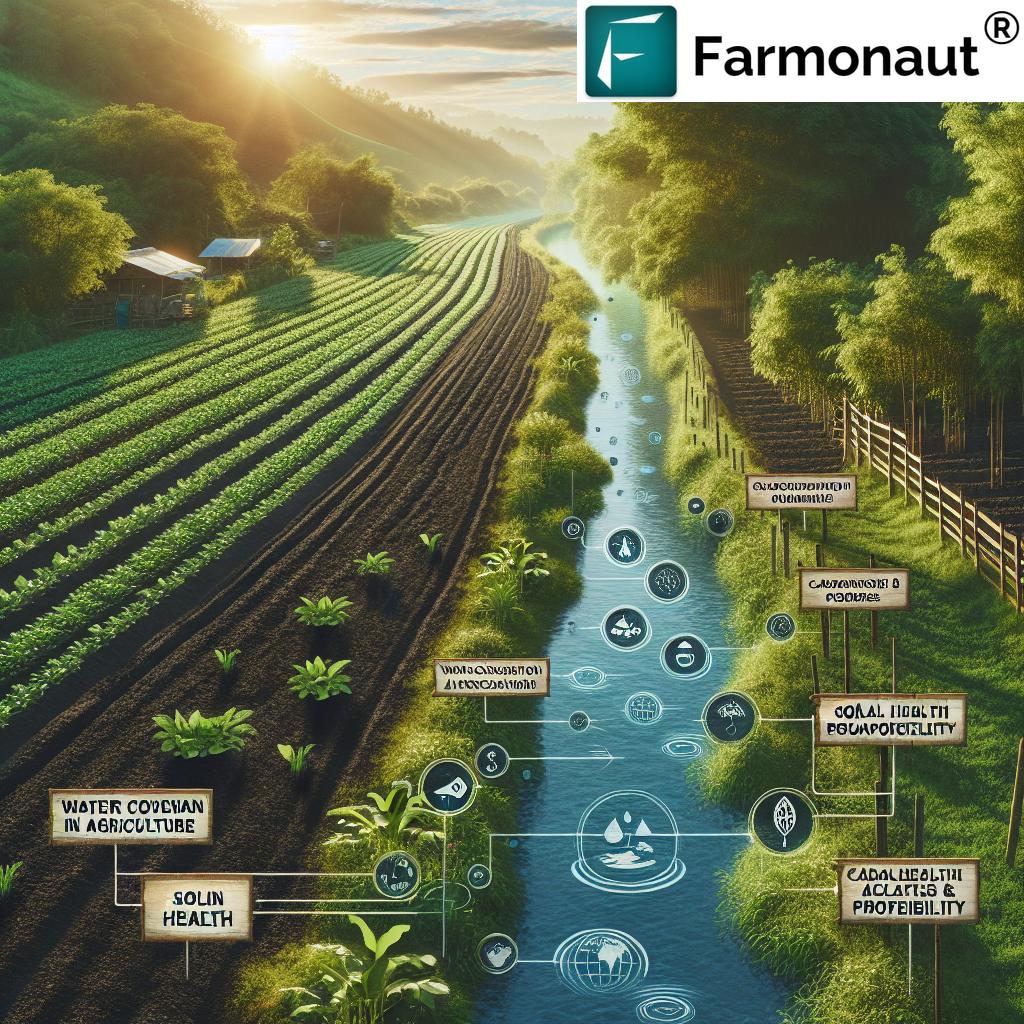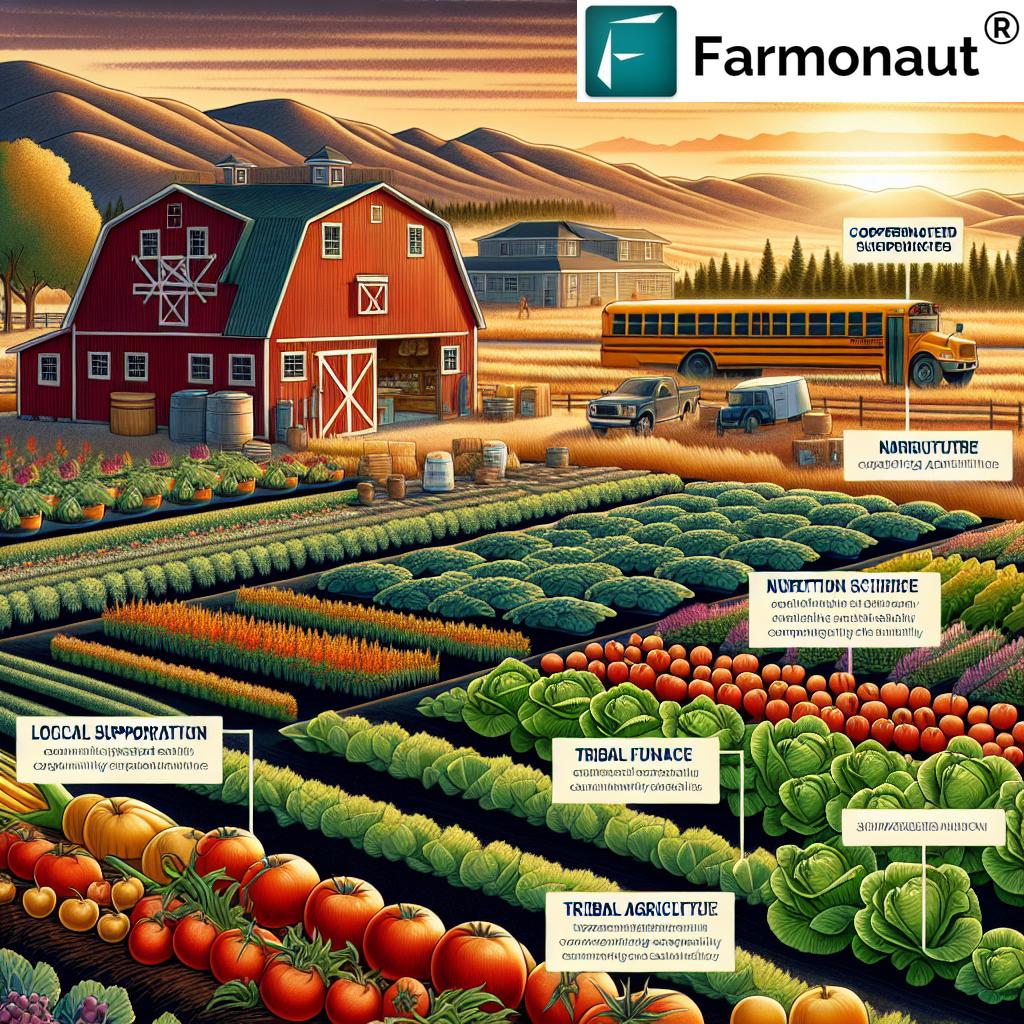Carbon Credits Drive Sustainable Agriculture: 1M Verified U.S. Impact
“Over 1 million verified U.S. carbon credits have been generated, driving sustainable agriculture and environmental impact.”
Introduction: The Evolution of Sustainable Agriculture
As the world grapples with the twin challenges of climate change and the need to feed a growing population, there’s an imperative for us in agriculture to transform. Nowhere is this clearer than in the rapid adoption of carbon credits for farmers and water conservation in agriculture. These strategies not only drive profitability and improve soil health, but also produce real, sustainable environmental impact at a scale previously unimaginable.
BOSTON, April 16, 2025 – A landmark demonstration of this potential arrives as Indigo announces the issuance of its fourth crop of independently verified carbon credits through the Climate Action Reserve. With nearly a megaton of carbon removals now stored in US cropland and over 64 billion gallons of water conserved, the journey to scalable, resilient, and profitable agricultural sustainability takes a new leap forward.
In this comprehensive guide, we explore how Indigo’s carbon program has set the standard for nature-based carbon solutions with nearly 1 million credits issued — transforming farming communities, strengthening watersheds, and redefining what it means to manage risk and growth in agriculture.
Jump ahead: See quantifiable impact from U.S. cropland carbon credit programs,
discover Farmonaut’s enabling technologies,
and get answers to common sustainable ag questions.
“Farmers using carbon credits see measurable improvements in soil health and water conservation, boosting both profitability and sustainability.”
1. Impact at Scale: Indigo’s Carbon Credit Program
Few programs illustrate the power of scalable sustainability in agriculture like Indigo’s carbon credits for farmers. Over four harvests, the program has:
- Issued nearly 1 million verified carbon credits through independently audited standards (via Climate Action Reserve)
- Sequestered or abated 927,000 metric tons CO₂e across 28 states — the equivalent annual energy use of 178,000 U.S. homes
- Conserved over 64 billion gallons of water, reducing runoff and improving local watershed resilience
- Returned 75% of the carbon credit value directly back to the farmer, driving economic benefits and profitable diversification
By prioritizing regenerative farming practices, Indigo’s model demonstrates the environmental benefits of carbon credits are both scalable and transformative — not just for the climate, but for the health, productivity, and profitability of American agriculture.
2. Foundations of Carbon Credits in Agriculture
What Are Carbon Credits for Farmers?
Carbon credits are units representing the removal or reduction of one metric ton of carbon dioxide equivalent (CO₂e)—either through carbon sequestration in soils and crops or by emission reduction. Farmers can generate these credits by adopting regenerative practices like:
- No-till or reduced-till management
- Cover cropping
- Optimized fertilizer use and crop rotations
- Diversifying planting to support soil health and profitability
These practices allow farms to store more carbon in the soil, while simultaneously improving resilience to drought, pest pressure, and price volatility. For each ton of carbon removed or stored, a credit is issued. Farmers sell these credits—often to corporations needing emission reductions for sustainability goals.
- Environmental benefits of carbon credits include carbon removal and a reduction in atmospheric greenhouse gases.
- Agricultural benefits include soil structure improvement, greater water-holding capacity, and increased yield stability.
- Economic benefits mean farmers diversify revenue and gain new, durable streams of income—especially important in times of low commodity prices or high input costs.
Water Conservation in Agriculture—A Core Co-Benefit
A key finding from Indigo’s program: regulated carbon farming practices dramatically reduce surface water runoff. Healthy soils—with more organic matter and better structure—absorb and retain water more efficiently. The latest issuance saved 20 billion gallons of water runoff, equivalent to the typical annual household water use for over half a million American homes.
3. Science, Verification & Quality in Carbon Credits
Rooted in Science: Accurately Measuring & Ensuring Durability
For nature-based carbon solutions to deliver real outcomes, they must meet rigorous scientific and third-party validation standards. Key highlights:
- Indigo’s “MRV” (Measurement, Reporting, Verification) approach is regarded as a best practice standard, recognized for accurately capturing both carbon sequestration and water outcome data at the field level.
- Reports by independent, science-led carbon management experts identify Indigo’s model as industry-leading for transparency and data quality.
- Independently verified credits via Climate Action Reserve further ensure real, third-party validated emissions reductions or removals.
This quality commitment continues to attract a growing network of credit buyers seeking high-integrity solutions. Notably, as more companies are prioritizing scope 3 reductions and nature-based sustainability goals, the market reach for agricultural carbon credits is expanding rapidly.
4. Economic, Soil, & Water Benefits for U.S. Farmers
Resilient Growth and Profitability
For the individual farmer, sustainability is about balancing economic value with risk management and environmental stewardship. This program delivers:
- Direct economic return: As much as 75% of the carbon credit sale value goes to the farmer, ensuring meaningful on-farm revenue above and beyond crop sales.
- Year-round market access and transparency — credits are sold at fair market value, not discounted, supporting ongoing financial health for rural communities.
- Soil health improvements: Organic matter buildup, better nutrient cycling, and more robust soil structure decrease fertilizer needs and increase water holding capacity.
- Water conservation and runoff reduction result in less irrigation demand, reduced erosion, and healthier ecosystems both on and off the farm.
- Natural risk mitigation: Healthier, carbon-rich soils are more resilient to drought and flood, delivering both economic and natural resilience.
Maximizing Farmer Participation
Key breakthroughs, such as an 85% reduction in the administrative burden of farmer data collection, empower even more farmers to participate. Rapid, user-friendly systems mean that sustainability programs focus on management practices and outcomes—not just acres enrolled.
Access the Farmonaut Platform from any device to monitor crop health, water use, and carbon footprinting in real time!
5. Impact Comparison Table: The Quantifiable Results of Carbon and Water Credits in Agriculture
To showcase the measurable, data-driven outcomes of implementing carbon credits and sustainable farming, here is an “Impact Comparison Table” illustrating key sustainability metrics before and after credit adoption. The values are based on industry best estimates and publicly verified reports, highlighting the power of agricultural carbon removal and water conservation in agriculture.
| Metric | Estimated Value Before Carbon Credits | Estimated Value After Carbon Credits | % Change/Impact |
|---|---|---|---|
| Annual Carbon Sequestered (metric tons CO₂e/acre) | 0.5 | 1.2 | +140% |
| Water Conserved (gallons/acre/year) | 3,000 | 7,500 | +150% |
| Soil Health Improvement Score (index points) | 60 | 85 | +42% |
| Farmer Profitability Increase (USD/acre/year) | $15 | $80 | +433% |
| Surface Water Runoff Reduction (%) | 0 | 25 | 25% Less Runoff |
| GHG Emissions Reduction (metric tons CO₂e/acre/year) | 0 | 0.7 | Direct Reduction |
These transformative figures demonstrate how combining soil carbon sequestration, regenerative farming, and water stewardship yields measurable economic and environmental benefits.
6. Scaling Sustainability: Programs & Tech for Profitable Change
Indigo’s approach “is bigger than agriculture”—it’s about strengthening entire communities and industries through nature-based, registry-issued agricultural soil carbon credits. Key features include:
- Continuous improvement, science-backed monitoring, and transparent credit transactions
- Farmers receive compensation for adopting practices that help store more carbon and conserve water
- Lightning-fast data entry experience reduces administrative tasks, allowing scaling of sustainability programs across the entire sector
- By focusing on management diversity rather than sheer acreage, the initiative rewards innovation and resilience at all farm sizes
We see how carbon credits are now a true economic driver for the adoption of sustainable agricultural practices at unprecedented scale.
Key Digital Tools for Scaling Sustainable Agriculture Solutions
-
For farm-level carbon footprint tracking
— Monitor, reduce, and report your farm’s environmental impact with Farmonaut’s Carbon Footprinting tool. Access real-time emissions data, meet sustainability compliance requirements, and unlock new value from carbon credits markets. -
For fleet and resource management
— Efficiently manage agricultural machinery, optimize resource use, and maximize savings via Farmonaut’s satellite-powered fleet solution. -
For blockchain-based traceability
— Build trust in your supply chain. Farmonaut offers end-to-end traceability from field to consumer, boosting transparency for food and non-food agricultural commodities. -
For satellite-based crop loan & insurance verification
— Secure better financing options and minimize fraud with satellite imagery-based crop monitoring. -
Want to access these features or integrate into your agribusiness platform? Use Farmonaut’s API and get started with robust API developer docs for custom integrations.
7. Farmonaut: Enabling Real-Time, Scalable Sustainability Solutions
At Farmonaut, our mission is to make precision agriculture accessible and affordable globally by delivering actionable, data-driven insights to farmers and agribusinesses. Our platform leverages satellite imagery, AI, machine learning, and blockchain to power everything from real-time crop health monitoring (NDVI, soil moisture, weather) to robust resource optimization and carbon tracking.
How Farmonaut Empowers Sustainable Agriculture Solutions
- Satellite-Based Crop & Soil Monitoring: Monitor crop health, vegetation indexes, and soil moisture to take timely action on irrigation and input use—reducing both resource wastage and emissions.
- AI-Driven Advisory (Jeevn): Receive personalized, automated recommendations for optimal crop management and resource efficiency—maximizing yield and sustainability.
- Blockchain-Driven Traceability: Enhance transparency across agricultural commodity chains. Secure every link from farm to table, improving consumer trust and supporting premium markets.
- Carbon Footprint Tracking: Real-time emissions data equips both individual farmers and large-scale enterprises to make evidence-based, sustainability-first decisions.
- Fleet and Resource Management: Monitor, optimize, and save with our in-app logistics tools for large farms and agribusiness.
Who Benefits from Farmonaut?
- Individual Farmers: Affordable, real-time insights on crop and soil health — precision agriculture made easy.
- Agribusinesses & Corporate Supply Chains: Manage plantations, track fleets, and secure transparent, end-to-end traceability.
- Governments & NGOs: Implement region-wide sustainability initiatives, monitor impact at scale, and generate much-needed data for policy.
- Financial Institutions: Reduce fraud, fast-track crop loans, and streamline insurance processes via satellite-based verification.
With Farmonaut, achieving scalable, real, and measurable sustainability is now within every farmer and enterprise’s reach.
Ready to unlock your farm’s sustainability? Explore Farmonaut Large-Scale Farm Management Solutions — Efficiently manage thousands of hectares, monitor environmental outcomes, and drive sustainable profits.
8. What’s Next: The Future of Carbon, Water, and Profitable Regenerative Farming
With its fourth carbon harvest closed in April 2025, Indigo is fast approaching a megaton of registry-issued credits annually—firmly positioning itself as a global pioneer of nature-based agricultural carbon credits at scale.
Key Trends to Watch
- Lightning-fast, data-driven onboarding for farmers—eliminating paperwork and barriers to participation
- Locally-targeted watersheds—custom programs that maximize environmental outcomes where it matters most, based on new, field-level water data
- Continuous growth of scope 3 reduction demand: Corporations worldwide are shifting to high-integrity, nature-based credits such as those from U.S. cropland. This expands market value for regenerative ag and multiplies returns for rural communities.
- Field-proven results: With every new issuance and water conservation breakthrough, stakeholders across the agricultural value chain see measurable environmental and business gains.
Ultimately, the ability to scale healthy soils and water systems while increasing farmer profitability is the tipping point for a resilient, sustainable future in American agriculture—and globally.
Eager to lead the transition? Explore Farmonaut’s Crop, Plantation, and Forest Advisory platform for scientific, actionable guidance—Start now.
FAQ: Carbon Credits, Water Conservation, and Farmonomics
What is a carbon credit and how does it benefit U.S. farmers?
A carbon credit represents one metric ton of CO₂e removed from the atmosphere or avoided entirely. U.S. farmers earn these credits by adopting verified regenerative farming practices that increase soil carbon levels. Benefits include additional income, improved soil health, water conservation, and resilience against climate variability.
How are water conservation and soil health linked to carbon credit programs?
When farmers implement practices that store more carbon in their soils, those same soils become more porous and resilient, holding more water, reducing runoff, and increasing drought resistance—all measurable co-benefits that support real, scalable sustainability programs.
Why is scientific verification essential in agricultural carbon removal?
Scientific measurement and third-party verification ensure credits represent authentic carbon sequestration or GHG reductions. This reliability underpins trust in the market and enables farmers and businesses to meet sustainability and emissions reduction goals.
How does Farmonaut help with carbon footprinting and sustainable agriculture?
Farmonaut equips farmers and agribusinesses with real-time, satellite-based crop health monitoring, AI-powered advisory, carbon footprint tracking, and blockchain traceability, making it easier, more affordable, and efficient to implement sustainable practices and access environmental markets.
Where can I find more information or monitor my own farm’s performance?
Download the Farmonaut app on Google Play and App Store or use our web platform to monitor carbon, water, and yield statistics across your fields.
Farmonaut Subscription Options
Flexible subscription plans for farmers, agribusinesses, and research institutions—choose the scale that fits your farm, easily upgrade, and unlock all sustainability tools.
Conclusion: Leading the Way to Scalable Agricultural Sustainability
As we approach a new era in agriculture, the value of soil carbon sequestration, water conservation, and verified carbon credits is clearer than ever. Indigo’s near-megaton milestone underscores the ability of American ag to deliver environmental, economic, and community-wide benefits at scale. Technology leaders like Farmonaut make this transition accessible—democratizing real-time sustainability data and enabling both small farms and global supply chains to thrive.
Are you ready to maximize profitability, build resilient soils, and contribute to a world of sustainable farming? Download the Farmonaut app, or explore our complete Carbon Footprinting and Product Traceability solutions today.

















